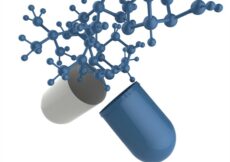In the realm of juvenile psychology, the interplay between dreams and sleep disturbances constitutes an intricate and multifaceted terrain deserving of meticulous examination. The scenario of a child engrossed in excessive dreaming, leading to perturbed nights, engenders a discourse that intricately integrates both psychological and biological dimensions. This article delves into this phenomenon, scrutinizing the underlying mechanisms from a vantage point that encompasses the profound nexus between dreams and sleep disruptions.
The Psychological Facet: Dreams as a Reflection of the Mind
Dreams, serving as the nocturnal canvas of subconscious creativity, offer a unique perspective into the workings of a child’s mind. The abundance of dreams in a juvenile’s sleep cycle can be a manifestation of their vivid imagination and cognitive development. Children often employ dreams as a conduit to process their experiences, emotions, and fears. A child’s dreamscape could be a haven where they interact with their internal world, grapple with novel ideas, and attempt to comprehend the complexities of their existence. Thus, it is paramount to recognize that the propensity to dream excessively is a manifestation of a child’s burgeoning psychological landscape.
The Biological Nexus: Sleep Architecture and Dream Proliferation
The intricate dance between dreams and sleep architecture is orchestrated by the biological machinery governing the sleep cycle. Sleep can be divided into several stages, with Rapid Eye Movement (REM) sleep being particularly pivotal in the context of dreams. During REM sleep, the brain exhibits heightened activity, akin to its wakeful state, while the body remains immobilized. It is during these REM phases that the majority of dreams occur.
For children, the proportion of REM sleep is markedly greater than that of adults. This predisposition can be attributed to their rapid neurological development and the consolidation of memories during sleep. The intricate neurochemical symphony, involving neurotransmitters like serotonin and acetylcholine, orchestrates this intricate ballet of REM sleep and dreams. Hence, it becomes evident that a child’s propensity to dream profusely is, in part, influenced by their unique biological blueprint.
Navigating the Confluence: Addressing Excessive Dreaming and Sleep Disturbances
The confluence of psychological and biological dimensions manifests as excessive dreaming leading to sleep disturbances, requiring a multifaceted approach for resolution. First and foremost, cultivating a nurturing environment for the child’s emotional expression is crucial. Engaging in open conversations about dreams, emotions, and experiences can facilitate the processing of thoughts that manifest during sleep. Encouraging the use of creative outlets, such as journaling or artwork, can provide an alternative channel for emotional expression.
From a biological standpoint, adhering to consistent sleep schedules and promoting healthy sleep hygiene is pivotal. Establishing a bedtime routine and minimizing exposure to screens prior to sleep can facilitate the regulation of sleep architecture. In instances where sleep disturbances persist, consulting a qualified healthcare professional, such as a pediatric sleep specialist, is advisable. Such professionals can proffer tailored strategies, which might encompass behavioral interventions or, in specific cases, pharmacological remedies to restore sleep equilibrium.
Conclusion
The intricate interplay between dreams and sleep disturbances in children encapsulates a profound nexus that bridges the realms of psychology and biology. Acknowledging that excessive dreaming is a reflection of a child’s psychological maturation, and recognizing the integral role of REM sleep in dream proliferation, lays the foundation for a holistic approach to address sleep perturbations. Through fostering an environment that fosters emotional expression and adhering to prudent sleep practices, the equilibrium between dreams and restorative slumber can be restored, allowing the burgeoning minds of our youth to flourish harmoniously.


































